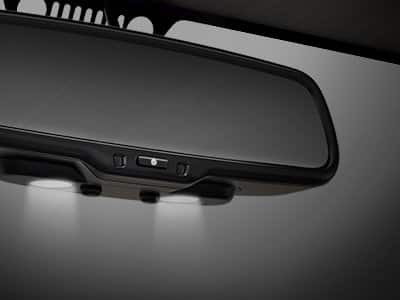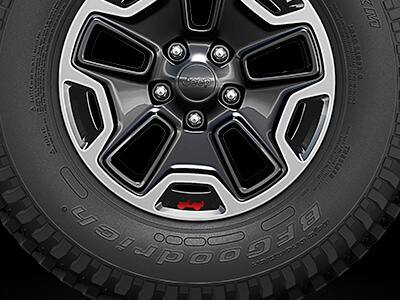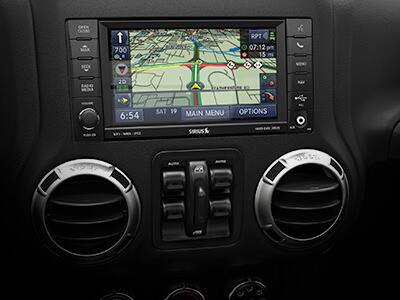A supreme combination of high performance and luxury: the all-new BMW M6 Gran Coupe now available in Indonesia

Jakarta – BMW Group Indonesia today launched
the latest model of BMW M, and proof that M is still the most powerful
letter in the world. The second body variant of the BMW M6
high-performance sports car is set to be presented for the first time in
Jakarta as the all-new BMW M6 Gran Coupe joins the existing BMW M6
Coupe in the line-up. The new member of the M6 family brings together
customary M high-performance characteristics with extra elements of
luxury and aesthetic appeal.
“Indonesia has given a warm welcome
to 7 models of BMW M Series, which we have launched in the last four
years. This has played an important role in the success of M” said
Ramesh Divyanathan, President Director BMW Group Indonesia. “Today, we
are proud to present the latest M automobile for our customers in
Indonesia - The BMW M6 Gran Coupe. It’s the perfect combination of
thrilling sports-car performance, attention to detail and advanced
technology in a four-door luxury coupe” added Ramesh.
The
high-revving V8 engine with M TwinPower Turbo technology and 560 hp
propels the BMW M6 Gran Coupe from 0 – 100 km/h in 4.2 seconds. And the
elegantly sporty lines of the four-door Coupe are complemented by
bespoke features, such as the carbon fibre-reinforced plastic (CFRP)
roof. The greater interior space of the BMW M6 Gran Coupe allows two
rear passengers to enjoy generous levels of on-board comfort, and there
is also a third rear seat for use on shorter journeys.
Design: the beauty of majestic power delivery.
Hallmark
M design features influenced directly by technical considerations –
such as cooling air requirements, chassis geometry, weight balance and
aerodynamics – open a clear window into the performance capability of
the BMW M6 Gran Coupe. The front of the car is dominated by its large
air intakes, standard Adaptive LED Headlights and an M kidney grille
designed especially for this model. From the side, the first four-door
Coupe in the BMW M model range is clearly distinguishable from the BMW
M6 Coupe thanks to its rear doors and 113-millimetre longer wheelbase.
The low roofline flowing smoothly into the rear, the swage line – which
takes in the door openers – and side windows extending well into the
C-pillars accentuate the dynamically stretched silhouette.
Prominently
flared wheel arches draw the eye to a track width specific to the BMW
M6 Gran Coupe. The characteristic M gills, aerodynamically optimised
exterior mirrors, standard BMW Individual High-gloss Shadow Line package
and exclusive 20-inch M light-alloy wheels in double-spoke design
underline the car’s distinctive appearance, as does another M signature –
twin exhaust tailpipes positioned on the outer edges of the rear apron.
Also integrated into the rear apron, and charged with the task of
optimising airflow along the car’s underbody, is a diffuser made from
CFRP.
This extremely lightweight, impressively strong high-tech
material is used in the construction of the roof as well. Here, the
visible carbon structure provides an eye-catching feature, as does a
dynamic recess in the centre of the roof. This recess is referenced
stylistically inside the car, the anthracite-coloured Alcantara roof
liner gaining a central section in leather.
Emulating the harmonious
blend of athletic prowess and elegance embodied by the exterior design,
the distinctively M cockpit fuses sports car style with generous levels
of space and a luxurious ambience. The driver and front passenger can
look forward to M sports seats with integral belt guides. And the BMW M6
Gran Coupe’s standard specification also includes Merino leather
upholstery with extended features. The rear compartment offers two or
three seats, the backrests of which can split and fold down in a ratio
of 40 : 60 to increase boot capacity from 460 to as much as 1,265
litres.
V8 engine with M TwinPower Turbo technology, seven-speed M Double Clutch Transmission with Drivelogic, Active M Differential.
The
powertrain technology under the skin of the BMW M6 Gran Coupe
guarantees the performance characteristics for which M Automobiles are
renowned. The V8 engine with M TwinPower Turbo technology produces 560
hp. Its technical wizardry includes a pair of twin-scroll turbochargers,
a cross-bank exhaust manifold, High Precision Direct Petrol Injection,
VALVETRONIC variable valve timing and Double-Vanos continuously variable
camshaft control. The 4,395 cc unit keeps peak torque of 680 Newton
metres on tap between 1,500 and 5,750 rpm, while maximum output is
developed between 6,000 and 7,000 rpm. The engine revs to a maximum of
7,200 rpm. The BMW M6 Gran Coupe sprints from 0 to 100 km/h in 4.2
seconds on the way to an electronically governed top speed of 250 km/h.
Average fuel consumption stands at 10.1 km/l and CO2 emissions are 232
grams per kilometre.
Taking care of power transfer is a
seven-speed M Double Clutch Transmission with Drivelogic. The
transmission’s electronic management system ensures the right gear is
selected for optimum traction. It also offers the driver a Launch
Control function for maximum acceleration, Low Speed Assistance for
extra comfort and the Auto Start-Stop function to enhance efficiency.
Under
particularly dynamic acceleration out of corners, as well as in tricky
road and weather conditions, the Active M Differential at the rear axle
distributes the engine’s power between the individual wheels to maximum
traction-enhancing effect. Its electronically controlled multi-disc
limited-slip differential works hand-in-hand with the DSC (Dynamic
Stability Control) system and splits drive between the right and left
rear wheels quickly and precisely according to the situation at hand.
Chassis technology developed to M specification.
The
chassis technology of the BMW M6 Gran Coupe is also geared to
harnessing the car’s sporting potential in the cause of supreme
performance. Like the integral rear axle, the double-wishbone front axle
has specific kinematics and components made from forged aluminium.
Chassis mountings using large panels ensure dynamic forces are passed
evenly through to the body. The BMW M6 Gran Coupe comes as standard with
an M-specific version of the Dynamic Damper Control system and
high-performance compound braking system combined with hydraulic
variable-ratio rack-and-pinion steering with the M Servotronic function.
Arranged
around the gearshift lever on the centre console of the BMW M6 Gran
Coupe are the buttons used to configure all the adjustable powertrain
and chassis functions to personal tastes. The DSC mode,engine
performance characteristics, Dynamic Damper Control mapping, M
Servotronic responses and M DCT Drivelogic shift program can be selected
independently of each other. All of which means the driver can put
together a detailed set-up and store those settings on one of the two M
Drive buttons on the multifunction steering wheel.
Exclusive and individual: high-quality range of equipment.
The
standard equipment fitted on the BMW M6 Gran Coupe includes 20-inch M
light-alloy wheels, extended Merino‘ leather trim including
Alcantara/leather roofliner, M multifunction driver and front passenger
seats, Soft Close Automatic function for the doors, an alarm system and
the new generation BMW Professional navigation system and a Bang &
Olufsen High End Surround Sound System. The BMW M6 Gran Coupe comes
standard with a 4-zone automatic climate control with a control panel in
the rear compartment.
The BMW M6 Gran Coupe also comes with a
variety of BMW ConnectedDrive features, such as an M-specific BMW
Head-Up Display, Park Distance Control with rear-view camera, High Beam
Assistant and Surround View. Customers can also integrate their Apple
iPhone or other smartphones into the car, enabling Bluetooth office and
Bluetooth audio streaming functions.
Price
The all-new BMW
M6 Gran Coupe is introduced at Rp. 2,598,000,000 off-the-road, and comes
with BMW Service Inclusive, which includes maintenance for 5 years or
60,000 km whichever comes first.
04.07.2013
 Gallery
Gallery






 Gallery
Gallery



















